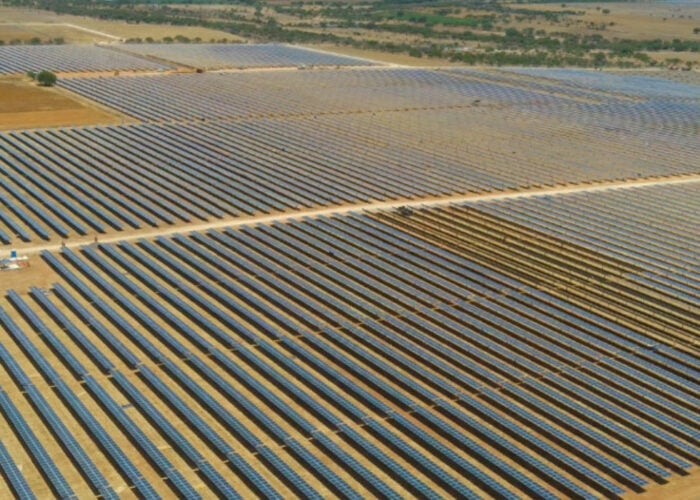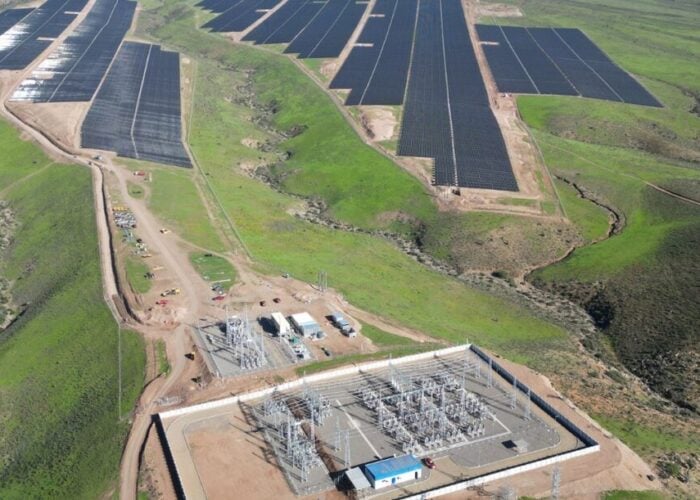As though by chance, the UK PV industry chose the London 2012 Olympic Games year to mark its entrance on the global stage as a gigawatt-status PV end market. And by the time the FIFA Soccer World Cup gets underway in Rio in 2014, Brazil will have broken through the 100MW annual PV demand barrier.
Competing on the world stage remains the ultimate goal of the PV industry. Collectively, to ensure that solar PV challenges on a cost-competitive level playing field with other energy types: individually, to claim a leading market-share and all the accolades that are bestowed upon a global energy provider.
Try Premium for just $1
- Full premium access for the first month at only $1
- Converts to an annual rate after 30 days unless cancelled
- Cancel anytime during the trial period
Premium Benefits
- Expert industry analysis and interviews
- Digital access to PV Tech Power journal
- Exclusive event discounts
Or get the full Premium subscription right away
Or continue reading this article for free
From a PV industry growth perspective, the focus is firmly on the globalisation of PV demand over the next five years. This is especially the case across the ‘emerging’ regions that include Latin America, the Caribbean, the Middle East, Africa and Emerging Asia Pacific regions.
According to the new NPD Solarbuzz Marketbuzz 2013 Report, this emerging PV group is set to provide more than 10% of the 230GW of new PV demand during 2013-2017, under the Solarbuzz 'most likely' growth scenario. It took the PV industry over 50 years to reach the 100GW installed PV mark, and now the industry will add over 200GW in the next five years.
Competing for 230GW by invitation only
There is just one problem here though. This 230GW stands simply as an accumulation of end-market demand over the next five years, both from a geographic standpoint and from different application segments. As such, there is not a single PV supplier that can truly say that this total addressable market (TAM) translates directly to a served addressable market (SAM) for their respective sales and marketing teams. Indeed, the solar PV industry is rapidly evolving into a collection of micro supply/demand environments.
Within every country, a unique range of factors is creating manufacturer, technology and project specific end-market PV demand segments. These segments can be differentiated by the type of PV suppliers preferred, the technologies of the modules required, the supply channels in play and the returns that can be expected.
The result is a complex web of sub-markets that, when added together, accounts for the 230GW of global PV demand over the next five year period.
The days of the PV industry clinging to global learning curves or generic side-by-side comparisons of module performance specifications are gone. Or at the very least, are relegated to the status of secondary importance. Similarly, academic spreadsheet calculations to forecast market share (or shakeout candidates) through estimating price and cost (and margins) have been rather downgraded in value. The events of the past 12 months provide indisputable evidence on each of these fronts.
China or not-China?
The most profound case study relating to the above points can be seen in China. While the dynamics involved are similar to many other countries, its relevance is elevated significantly now. This is due simply to the fact that in 2013, China will head global rankings for both PV supply and demand, notwithstanding any trade war related permutations.
In understanding the breakdown of the SAMs across PV industry supply and demand during 2013-2017, the first – and most significant – segmentation is done simply by splitting the industry into China and ‘not-China’. As a supplier to PV industry demand, you either have China in your SAM or you don’t. And if you are not selling into China, then your SAM over the next five years has just taken a massive hit.
Add in a few more countries that have their own set of entrance barriers that make market penetration unlikely, and the top line 230 GW figure starts looking more like a distant pipedream.
Conversely, if you are a Chinese manufacturer with multi-gigawatt manufacturing status and with preferential project supplier status, then the domestic market cries out for double digit market-share aspirations and offers a low-risk channel to justify ramping production lines to full capacity level.
However, while 100% of Chinese end-market demand falls into domestic suppliers’ SAMs, the same cannot be said about non-China end-market demand. Factor in trade wars now (regardless of how each plays out in the long run), and the SAM outside China certainly declines considerably. Now filter out thin-film market share driven by the business models enacted by market leaders in that space (or any preference for country-of-origin for large-scale utility projects) and certain countries or regions could even fall out totally from any global SAM analysis.
At one extreme, a Tier 2 c-Si module supplier in China is left only with domestic market supply, and not needing to care too much about a lack of presence or brand recognition outside China. In fact, there is no supposition here: this model was firmly in play during 2012 and continues during 2013, most notably in the events of the past week within Europe.
PV league tables
The fallout from increased diversification of end-market SAMs will be far reaching. While there are plenty of examples here already, it will become even more evident in the next 12-18 months. This will include changes in sales and marketing strategies as certain countries or segments are prioritised as key target SAMs and other less favourable markets are afforded minimal sales resource.
In addition to the geographic and application-segment specialisation, the global fragmentation will ultimately provide a leading indicator upon which upstream technology roadmaps can take shape.
Consequently, this will strongly influence the timing and characteristics of the PV equipment spending capex rebound from 2015 onwards, providing a rather indirect confirmation that customers do in fact pull technology change.
Finally, the spread of SAMs will manifest itself in different sub-segments of supply, where being at the top of selected league tables is seen mainly as a prerequisite to claiming global ranking supremacy. Global market shares for suppliers will simply be the summation of different PV league tables, some of them operating totally in isolation, and with weightings in proportion to the size of the regional markets in question.
But, ultimately, to qualify for the World Cup, you first have to take the honours in your domestic league. Then you have to defeat all the other regional winners on a level playing field. At this point, that 230GW jackpot SAM will be a real option, however distant this scenario may seem within today’s climate of cutthroat protectionism and negative operating margins.






